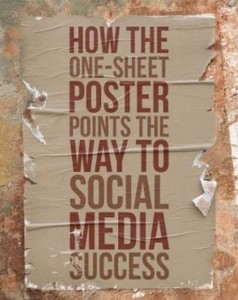Category: Truly Free Film
We are on the verge of a new film culture and infrastructure.
By Justen Harn
The Cinemapocalypse
For many there remains something magical about sitting in a cinema surrounded by strangers invested in a story, recalling tales told around a campfire, everyone drawn to the light like one of Brakhage’s moths. These tropes, in and of themselves, are indicative of film’s romantic, metaphysical appeal, but perhaps more importantly for our purposes, they bely the importance of the context within which moving images are consumed.

Given the sanctity of this nearcenturyold filmgoing ritual, why is it that movie theaters are struggling now more than ever to attract an audience? Even in the absence of current technological trends,at present the typical homeviewing experience cannot come close to that of watching a film projected on a 50 foot screen in a movie theater. To paraphrase Ted Hope, the trouble is that large box theaters, and many small art house theaters, while able to offer an unparallelled experience, are entirely dependent upon mass market cinema releases, products developed based on predictability and maximizing returns.
By Reid Rosefelt
 Have you ever thought about the miracle of the humble one-sheet poster?
Have you ever thought about the miracle of the humble one-sheet poster?
Whether a film costs a hundred thousand or a hundred million–it gets the same 27” by 40” poster in the display case.
Now imagine you prefer squares, so you make 40” x 40” posters for your independent film. Or maybe you’re nostalgic for the good old days of Lobby Cards, so you make your posters 11” x 14” on sturdy cardboard stock. So now there’s room for 27” x 40” but you’ve elected to leave most of it blank.
But why would you do that? It wouldn’t make any sense.
But that’s what people often do in social media.
Image orientation and size makes a huge difference on different social channels. A tall picture on Pinterest is striking; a wide one is tiny. Tall pictures look great on Google+ too. On the other hand, wide aspect ratios look best on Facebook and Twitter.
If you read this blog, you know I am a champion of mission check. You might now be wondering a bit about mine. A year or so ago, I reported to you that when asked to consider a project I responded:
“I am taking a hiatus from producing any projects for the time being. Instead, I am trying to advance an independent film infrastructure that can truly support a diverse and ambitious film — in it’s broadest & most innovative definition — culture, one where the artist and their supporters are direct beneficiaries of the work they generate, where risk is both rewarded & encouraged, & audiences are active participants in the community. I am running Fandor in hopes I can help the progression move quicker & others may navigate the paradigm shift to abundant, accessible content more smoothly & less painfully.”
Only of course then I did not say Fandor, did I? But
We announced my new job today. A review of the press yields a cornucopia of juicy tidbits.. um, TEDbits…:
Data shows that spending on indie films rivals the major movie studios
Entertainment Media Partners and Cultural Weekly are pleased to announce the release of an in-‐depth infographic exploring the state of independent filmmaking by looking at key data associated to The Sundance Film Festival. Although the info graphic is below on the post, you can also access the full analysis here:
http://www.culturalweekly.com/sundance-infographic-2014/
“This is the first time anyone has tried to quantify the amount of money spent producing independent films every year,” said Adam Leipzig, CEO of Entertainment Media Partners. “The numbers are huge— over $3 billion per year—even though each film is financed one at a time.” The infographic provides an eye-‐opening look at the importance of The Sundance Film Festival and the movies screened there, by visualizing data on films submitted, films accepted, financial investment, and how many people work on indie movies. It also offers box office data associated with films that have sold for the most money at the festival, and those that served as opening night premieres.
Leipzig identified these key findings:
• Over $3 billion is spent annually to produce independent films, rivaling the production expenditure of major movie studios.
• Less than 2% of that $3 billion will be recouped.



